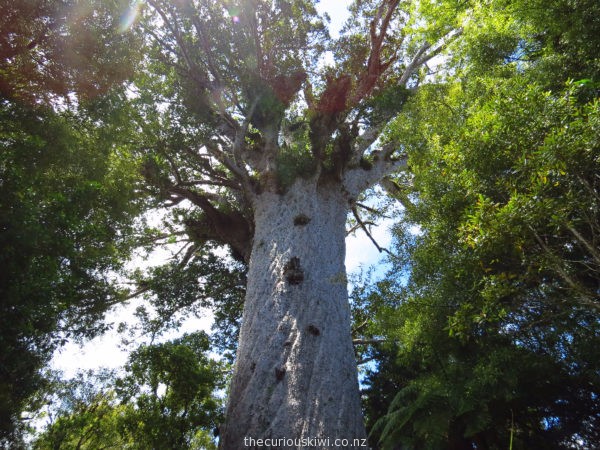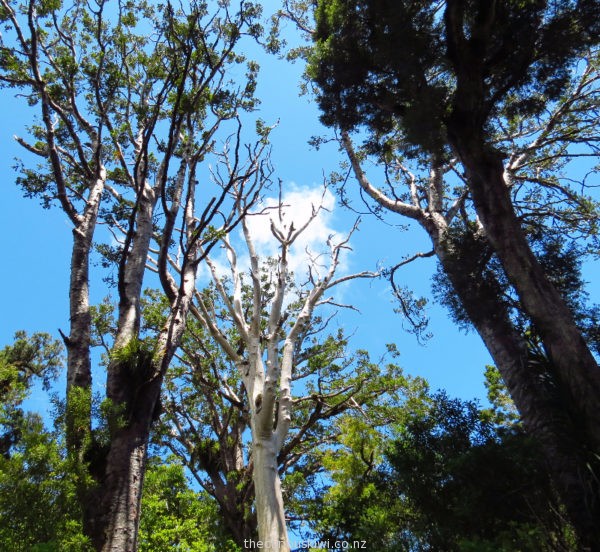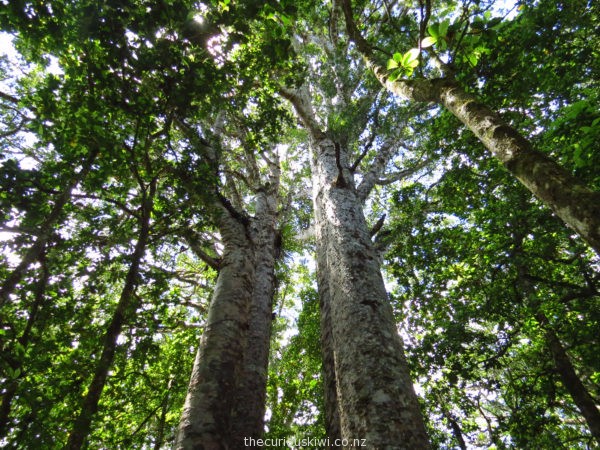Travelling State Highway 12 in Northland takes you through Waipoua Forest dotted with kauri, rimu and northern rata trees. Department of Conservation (DOC) list seven walking and tramping tracks in Waipoua Forest including Tane Mahuta.
Tane Mahuta (Lord of the Forest) is New Zealand’s largest known living kauri tree and he is an awesome sight to see. The tree stands over 50 metres tall and has a girth of more than 13 metres.

Tane Mahuta in Waipoua Forest
Some people may be tempted to wrap their arms around the majestic giant, but Tane Mahuta is fenced off from his thousands of admirers for his own safety. Visitors are asked to keep to the tracks and boardwalks as kauri trees have shallow feeding roots and damaging the roots can kill the trees.

Plenty of people stop to see Tane Mahuta
Trampling roots isn’t the only threat to kauri trees, kauri dieback disease has killed thousands of kauri trees over the last 10 years. The disease spreads through spores in soil so it’s important to use the shoe cleaning stations before and after you walk in the forest.
Trees infected by kauri dieback look like the dying white tree below, my eyes filled with tears when I saw it, healthy trees are something I’ve taken for granted, but not anymore.

Dying tree
Directions:
Look for the Tane Mahuta sign on State Highway 12, the sign is 18km north of Omapere and 65km south of Dargaville. A short 5 minute stroll from the car park along a boardwalk takes you to Tane Mahuta.
Four Sisters Walk
Another short 5 minute walk through Waipoua Forest takes you to the Four Sisters – four kauri trees standing close together. A viewing platform circles the trees so you can see them from every angle.

Four Sisters in Waipoua Forest
Two other walks can be reached from the track to the Four Sisters – Yakas Walk and Te Matua Ngahere Walk. Te Matua Ngahere is shorter, but older and wider than Tane Mahuta, I doubt this tree gets as many visitors as Tane Mahuta so if you’re looking for the less beaten track this would be the one to choose.
Directions:
Look for the Kauri Walks sign on State Highway 12, about 2km south of the car park for Tane Mahuta.
Did you know: The Japanese coined the term Shinrin-yoku or forest bathing in the 1980’s. Their research found that spending time in a forest (or forest bathing) is beneficial to your health. Sounds like a no brainer to nature lovers but now there’s medical evidence to back it up. (Forest bathing is done with your clothes on if you’re wondering).

oh I miss Northland- I remember this area well.
Memory Lane, I like to go there too.
Forest bathing sounds unique but Country folk have used grass washing for aeons. Maybe that’s why most are pretty healthy.
Can’t say I’ve ever heard of grass washing but I feel uplifted when I walk in the Redwood Forest or spend time in the countryside. I wonder occasionally whether that feeling would stay if I moved to a rural area, country folk may have already worked that out for themselves.